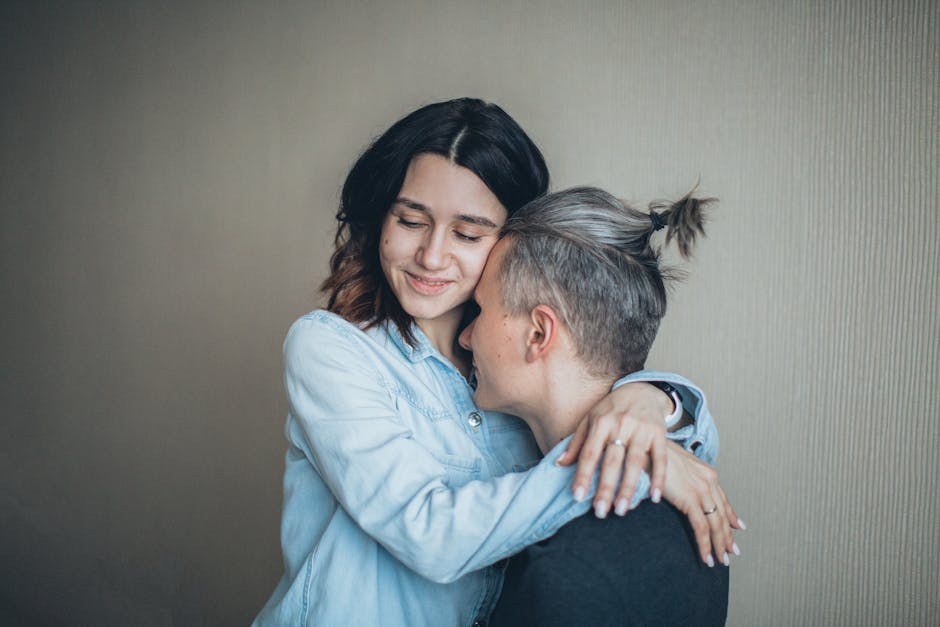Most people can name a handful of sexual identities, yet far fewer can comfortably explain romantic orientation – the pattern of who we tend to form romantic feelings for. Understanding your own romantic orientation can be a gentle but powerful way to make sense of relationships, set clearer expectations, and talk about desire without confusion. It does not replace sexual orientation and it does not dictate whether you want sex – it simply describes how romance shows up for you.
Why understanding romantic orientation matters
Labels are not cages – they are maps. When you have language for your romantic orientation, you can describe attraction with more accuracy, protect your boundaries, and avoid assumptions that lead to hurt. You might, for example, feel a strong emotional pull toward a certain group of people while experiencing little or no sexual interest in them. Without a term for that, it is easy to misread your own signals or to let others misread them for you.
Recognizing a romantic orientation also supports empathy. When a friend or partner uses a term you have not heard before, they are not trying to be difficult – they are offering you the shorthand that explains how love works for them. Meeting that information with curiosity rather than skepticism keeps connections kinder and more honest.

How romantic orientation differs from sexual orientation
Sexual orientation answers a straightforward question: who do you want to be intimate with in a sexual way. Romantic orientation answers a different question: who do you fall for emotionally – the people you daydream about, want to date, and imagine building a life with. These two tracks often run together, but they do not have to. Someone might be sexually interested in multiple genders while only experiencing romance toward one; someone else might rarely feel sexual desire yet still crave deep romantic partnership. Knowing your romantic orientation helps you name that divergence clearly.
Because the two forms of attraction can overlap, many people assume they are identical – that is the common mix-up. Paying attention to the distinct rhythm of your feelings can reveal patterns you already knew in your gut. If sex and romance line up for you, great. If they do not, that is also normal, and having language for it makes conversations with partners far easier.
Common romantic orientations explained
Below is a plain-English tour of widely discussed labels. Each term describes a pattern – a way romance tends to appear. None of these terms predicts what your relationships must look like; they simply help you talk about your experience.

-
Aromantic – People who use this label generally do not experience romantic attraction. They may value companionship, intimacy, or sex, but crushes and the urge to pursue conventional romance rarely – or never – show up. This romantic orientation is not a lack of feeling; it is a different way feelings organize themselves, often centering friendship, community, or solo life.
An aromantic person can still build rich, meaningful bonds. Think of it as a shift in what “love” looks like – less about couplehood, more about connection on their terms.
-
Biromantic – This term describes experiencing romantic attraction to two or more genders. It is related to, but not the same as, being bisexual. You might be biromantic and sexually attracted to the same set of genders – or not. This romantic orientation focuses on the romantic pull itself, not what happens in the bedroom.

Because romance and sex can move at different speeds, a biromantic person might date across genders while discovering that sexual interest shows up differently from case to case.
-
Heteroromantic – Romantic attraction toward a gender different from your own. Many people who identify as heterosexual also identify as heteroromantic, but not everyone. This romantic orientation may sit alongside a sexual orientation that is more fluid, which is why the distinction helps clarify expectations in dating.
Someone might, for instance, feel occasional sexual curiosity about their own gender while only developing romantic feelings for another gender – heteroromantic language makes that easier to articulate.
-
Homoromantic – Romantic attraction toward the same gender as yourself. Some homoromantic people also describe their sexual orientation as gay or lesbian; others do not. This romantic orientation simply names the direction of romantic pull, leaving room for sexual desire to have its own pattern.
For example, a person could enjoy sexual experiences with multiple genders while noticing that deep, lasting romantic feelings arise only with their own gender.
-
Panromantic – Romantic attraction that is not constrained by gender. People who identify this way often describe falling for a person’s character, humor, or values – gender is not the deciding factor. This romantic orientation highlights that, for them, the spark of romance can emerge with anyone, regardless of gender identity.
It does not claim that every person is attractive – only that gender is not a filter for whether romance is possible.
-
Polyromantic – Romantic attraction toward multiple – but not all – genders. Panromantic and polyromantic can sound similar, yet they mark different patterns. This romantic orientation acknowledges that several genders feel romantically available while others do not.
You can think of it as a wide doorway rather than an open field – there are many ways romance might happen, but not every path is included.
-
Gray-romantic – People who rarely experience romantic attraction may use this label. Feelings might appear infrequently, unpredictably, or only under unusual circumstances. This romantic orientation often helps someone say, “Romance is possible for me, but it is uncommon, and I cannot force a timeline.”
Because the timing is irregular, gray-romantic folks sometimes look back and realize that long stretches without crushes were not confusion – they were simply their normal.
-
Demiromantic – Romantic feelings tend to arise only after a substantial emotional bond forms. Attraction does not usually appear at first sight; it grows from trust and closeness. This romantic orientation is about prerequisites, not purity – it means the spark needs a foundation to ignite.
Someone might enjoy meeting new people while knowing romance will not click until a deeper connection develops – that clarity can protect boundaries and pace.
-
Sapioromantic – A pull toward intelligence, curiosity, or mental connection. People using this word often find that thoughtful conversation or shared intellectual passions switch on romantic interest. This romantic orientation is not about academic credentials – it is about the felt magnetism of minds meeting.
For some, a lively exchange of ideas is the moment romance becomes imaginable – the conversation itself is the spark.
-
Autoromantic – A focus on self-directed romance, where feelings of romantic love may be oriented toward oneself. This romantic orientation can look like savoring solo rituals, writing love notes to oneself, or enjoying the aesthetics of romance without directing those feelings toward another person.
It does not forbid partnership – it centers self-affection as a meaningful romantic experience in its own right.
-
Androromantic – Romantic attraction toward masculinity. The key here is not necessarily men as a category but masculine traits – presentation, energy, or style. This romantic orientation leaves room for attraction to people of varied genders who embody masculinity.
Because gender expression can shift, androromantic attraction often follows how someone shows up rather than the gender printed on a form.
-
Gynoromantic – Romantic attraction toward femininity. As with androromantic, the focus is on feminine qualities rather than a specific gender category. This romantic orientation recognizes that softness, grace, or other traditionally feminine traits may be what lights up romance.
Again, it is about the qualities you respond to – not the assumptions other people might make from the outside.
-
Pomoromantic – A stance that declines existing romance labels altogether. People who identify this way may experience romantic attraction, but they do not feel that current terms describe them accurately. This romantic orientation resists categorization – the refusal itself is the description.
Choosing not to adopt a label can be its own form of clarity – a way to protect nuance and avoid boxes that do not fit.
How romantic orientation plays out in real relationships
Many people find that their sexual orientation and their romantic orientation move in tandem – the same groups who feel sexually compelling are also the people they fall in love with. Others discover two parallel tracks. You might feel sexual chemistry in one direction and deep romantic yearning in another; you might want sex rarely while craving steady companionship; you might desire romance without sex. None of that is a problem to be solved – it is information you can use.
Clarity helps when designing relationships. If your attractions do not line up neatly, honesty about it early on can prevent confusion later. Some people craft monogamous partnerships that include room for differences in desire; others design non-monogamous structures where needs are met across more than one relationship. Provided everyone knows the terms and consents, there is no single correct shape. The point is to align your agreements with how your feelings actually work.
Practical ways to explore your own pattern
If you are still figuring things out, gentle self-observation goes a long way. Notice who you daydream about, who you want to text first thing in the morning, and who you imagine introducing to your closest friends – those are clues about romance. Notice, separately, who you picture in sexual scenarios – those are clues about sexual attraction. If they match, great; if they do not, you have just learned something useful about your romantic orientation.
Journaling can help track patterns you might miss in the moment. When did a crush start – after a long conversation, a shared project, a sudden spark across a room? Did interest fade once sex entered the picture, or did it deepen? Over time, you may see that romance often follows connection, or hinges on certain traits, or rarely appears at all. None of those outcomes is a failure – they are a profile of what fits you.
Language, respect, and everyday etiquette
When someone shares a label you have not heard, consider it an invitation to understand them better. You do not have to become fluent overnight; you only have to listen. Asking open questions – “What does that look like for you?” – communicates care without demanding a TED Talk. If a term changes later, that is not a betrayal – people refine language as they refine self-knowledge.
It also helps to avoid assumptions based on a single word. Two people who both say “demiromantic” might live that experience differently. A label is a headline, not a full biography. Let actions and conversations fill in the details so that your understanding grows beyond dictionary definitions.
What to remember about validity and variety
You do not have to personally relate to every term to respect it. The world contains many ways of being, and the language around romance exists to reflect that variety, not to police it. If a friend says they do not experience romance the way you do, believe them. If your own feelings do not match the scripts you were given, you are allowed to write new ones. Your romantic orientation is descriptive – it tells the truth about how your heart tends to move – and that truth is enough.
Whether you prefer life centered on friendship, flourish in a traditional couple, fall in love only after trust takes root, or find that gender plays little role in who you swoon for, there is room for your pattern. Respecting your romantic orientation – and the orientations of others – will not solve every relationship puzzle, but it will make the conversations kinder, the boundaries clearer, and the connections more honest.